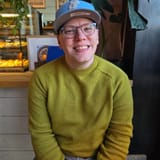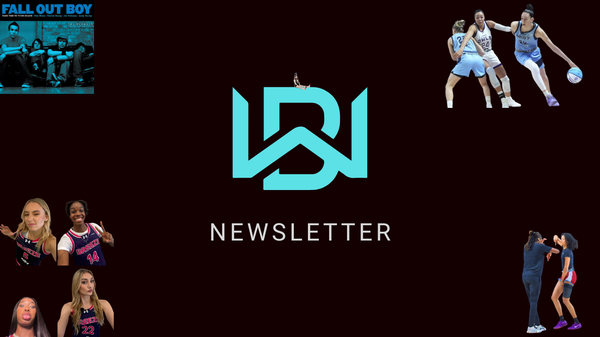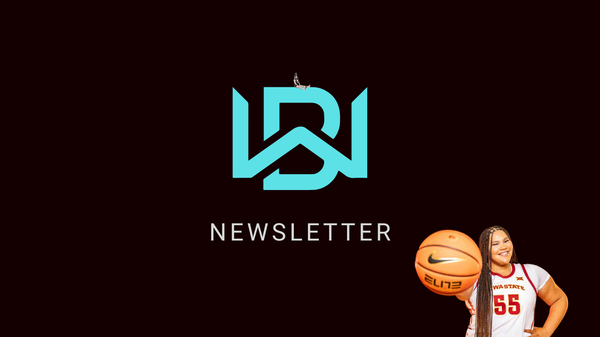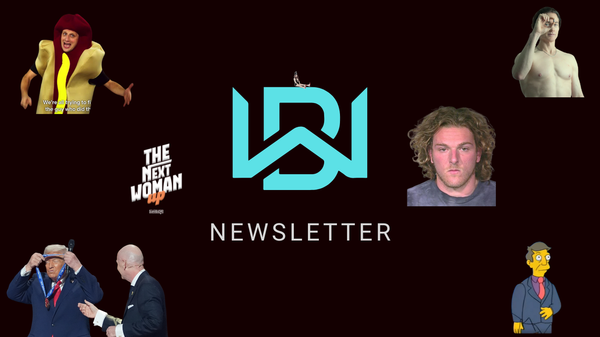A Conversation With Campbell Burke
Campbell Burke, MBA, takes us behind her research on the Intentionality and Women's Sports Marketing: Analyzing Nike's So Win Campaign.
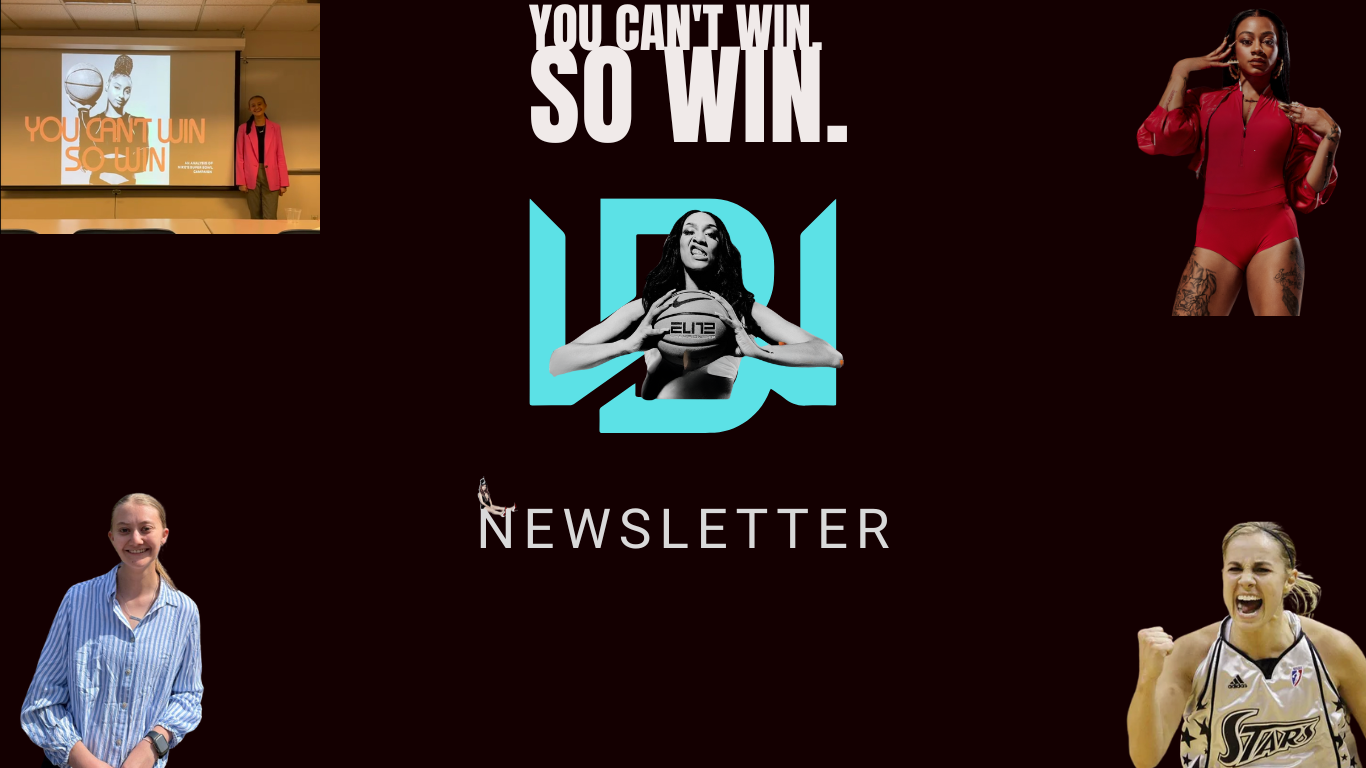
On Thursday night, I caught up with Campbell Burke, MBA, about her in-depth research paper and capstone project on Intentionality and Women's Sports Marketing: Analyzing Nike's So Win Campaign.
Campbell shared the presentation and the research paper with me, and it was fantastic.
Fresh off of presenting the project and earning her MBA, Campbell hopped on Zoom with me to chat about the idea behind the project, her findings, and more.
You can watch the video below, or you can read our back and forth – edited for brevity and clarity – below.
Enjoy.
Michael Waterloo: Welcome to another edition of The Walking Bucket. I'm Michael Waterloo, and I am really excited about this edition today. Joining me is Campbell Burke, who not only recently graduated with her MBA in Sport and Entertainment Management, but did a big capstone project and research paper on Intentionality and Women's Sports Marketing: Analyzing Nike's So Win Campaign. Campbell, thanks so much for joining me. How are you doing?
Campbell Burke: I'm good. Thanks for having me. I'm really excited to talk to you about this.
MW: I think, if my memory recalls, there were 117 people who took the survey. So, I was one of them, and have been very excited to see the results and seeing it come to fruition. Can you take me through the idea behind your project and like what made you want to do this?
CB: This project actually came to me back in November in a little bit of a different way. I saw the campaign that Nike did for the NWSL Championship. That said, "Not here to inspire dreams, here to lift mine." And it was like a bunch of billboards that they posted up in Kansas City around the championship. And that was kind of the first time I had ever seen women's sports marketing talking about success. I feel like we hear all the time about female advertising, so inspirational to little girls that I was just so tired of that.
That was kind of the inspiration, and then throughout the process, I worked really closely with my advisor to kind of narrow down that scope and that focus. And she actually used to work for Nike, so she was like, 'well, what about their Super Bowl ad?' That was such a big deal. It's their first one in 27 years. It was just really cool to see.
MW: And I think everybody kind of remembers seeing that for the first time. There was a lot of conversation about it online, but I want to know what your first reaction was whenever you saw 'You can't win, so win.'
CB: I had a few of my friends over to watch the Super Bowl, and we did not care about any of the teams involved. We were just mostly watching the commercials and eating good food. We were watching and then it started, and we all kind of stopped the conversation. I was like 'my god that was so cool.' I loved it.
I had many people texted me being like my God, did you see that Nike campaign commercial? And I was like, obviously, yes. Let's talk about it forever. It was so cool and I loved how it was essentially calling out the way people have double standards for female athletes and women in general in a lot of ways. And I just love to see it. So many of them in one space, in one commercial, just being highlighted for the things that they have done.
MW: There's the irony of the message getting lost on a lot of people and, frankly, the people you would expect to get it lost on saying 'you can't win, so win? That doesn't make sense to me.' Was your reaction the same as mine?
CB: Yeah, for sure. And I think I saw that a little bit in the survey, too. I had people be like, 'well, I don't get it.' And I'm like, 'good, then think about it a little.' If you don't get it, you're not trying hard enough to understand. Even I kind of had to explain it to my mom and she, you know, she loves women's sports because I love women's sports and she said, 'Well, you know, it doesn't make sense.' And I was like, 'But think about it. Think about all the pressure that all of these athletes have on them all the time and all these different things that they have to do and how often they're told 'no,' but they're still expected to win.' And I think I brought up like the USWNT to help people really understand. They've won four World Cups and they were still planning to make the same amount of money as the men who have won zero.
MW: I want to raise another point that you bring up in there. And that is about masc-presenting athletes. I can't help but think of the Skims campaign last year. We saw a lot of different people out there like, partnering with Kim Kardashian's brand, whatever you think about that. There's Cameron Brink, there's Kelsey Plum, there's a lot of people in the Skims campaign, but there were no masc-presenting athletes there. Is that something you see improving as time goes on? And what kind of brands are doing a good job with that right now?
CB: I wish that I could just name off like five brands off the top of my head, that are doing a good job, but I can't because there isn't anyone that's doing a great job of that, in my opinion. That goes in line with openly queer athletes, too. If you look at the Can't Win or So Win campaign, there's only one who's openly queer in it, which is great. And I'm so happy for her, and I love that. But I'm like, there's so much space for more. Especially with the women's sports community being so queer, which I love. I mean, I'm a part of the community as well, so I want to see that representation, too.
I think Candace Parker is a good example of someone who toes the line a little bit. She's obviously a queer woman and is in a lot of stuff with Adidas. So, I've loved seeing her stuff, but even she's more on a stereotypical feminine appearance side of things. I think of Kierstan Bell as a great example in both cases. But that's a whole other thing that I kind of dug into in my papers, this whole idea of it women and female athletes in particular have to have something else to their brand image. So often that is appearance. And unfortunately, we are in a straight passing society and that's the expectation we have.
MW: Even with the tunnel fits, like I know it's fun. Everybody loves them. And they're fantastic. People look great. Every player I talk to, I talk about tunnel fits, but there seems to be a focus on kind of like your traditional fem-presenting athletes who really get there. But what I'd love to see a brand work with the Dallas Wings, probably the biggest masc-presenting team in the league right now. Why somebody in Minnesota right now isn't doing something with Natisha Hiedeman and Courtney Williams for the Stud Buds. There's a perfect way to do that right there especially you're talking about for queer athletes. The WNBA, last time I checked, is 38% queer and Black women.So like there's a lot that can be done there and hopefully this is just the start of it as far as like moving in the right direction, especially for those in those communities and the LGBT in the queer communities and the mass presenting athletes.
MW: So overall though, which brands do you think are doing well?
CB: I think Nike is, and I'm not just saying this because I've studied so much Nike. I've always felt pretty strongly about their campaigns and brand. I think they're definitely ahead of the curve when it comes to that. I think Adidas is doing a good job of pushing out that marketing with their female athletes. I know they've been doing a lot more with the WNBA, but State Farm is doing a really good job. Every time I see the Caitlin Clark logo commercial, I start laughing.
MW: Throughout the survey, you got to see all 117 responses. What was the biggest surprise or surprises to you whenever you're kind of combing through those and compiling that data?
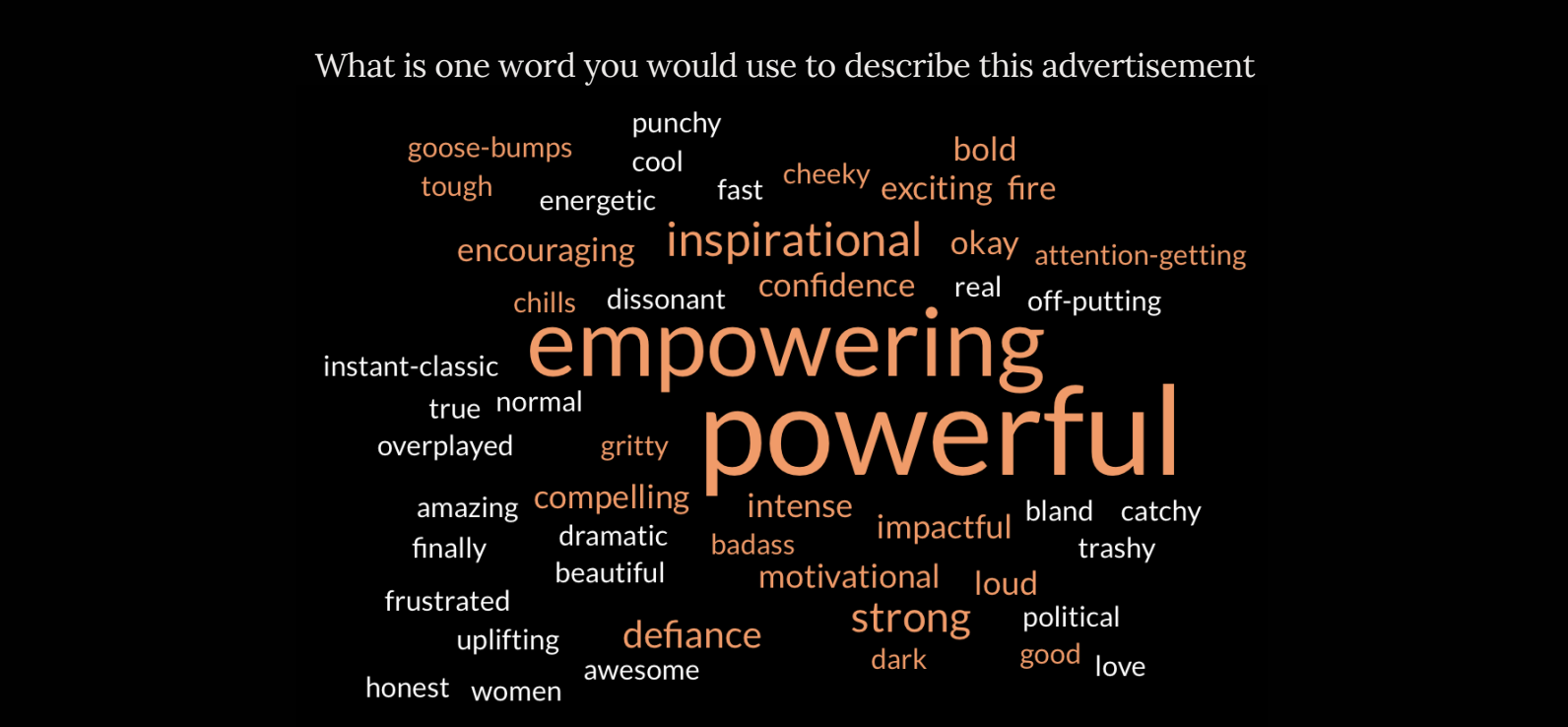
CB: One of the questions I asked was, what is one word you'd use to describe this commercial? And that was my favorite question because there were 98 people that used the generally positive word to describe it, which is incredible. And I expected to see the word inspiration used a lot more. It was only used seven times, which was really cool to me. The most popular word was powerful and that was 21 times. I have some people who hated it. There was one person who called it trashy, and I kid you not, I laughed about it for like five minutes after I read it for the first time because I was like I don't know how you get that, but I want to know. Like, please, tell me more.
MW: You had to present this in order to get your MBA. What's some of the feedback that you've got from people who have seen this?
CB: We did our presentations on a Monday night, just like during our normal class hours, and I got to go first. I say I got to go first rather than I had to go first because at first I was terrified. And we presented on my birthday, so that was kind of a wild time. I got a lot of really positive reactions from it. We were really fortunate to get to have the class that's below us, the people who are graduating next year in our program, come listen to our presentations. And that was really cool.
I don't frequently say this about myself, but I'm really proud of the product that I came up with because I put so much effort into it.

MW: I want to highlight a part in your research, where you said, 'Horizon media reports that women sports fans are more likely to engage with brands than male, their male counterparts.' My question kind of bouncing off of that is, do you think that there's a tie with that and the 'inclusivity and community' that you go on to mention in that same section that women's sports fans have making the fans more trusting of that brand?
CB: Absolutely. I had sent a message out in our Discord that was just like, 'hey, what brands do you think are doing a good job versus a bad job?' And there were so many people who were saying that they thought Ally was doing a great job. And then like four other people would be like, 'yeah, I think Ally is doing a great job.' And I was like, great. I'd love to see that. I definitely think there's a level of brand loyalty that comes from women's sports fans that is a little bit different. If you go to an MLB game, you see so many jerseys from so many different teams, but when you go to an NWSL game, most of the jerseys that you see are either US Women's National Team or someone who's playing on one of those teams. I love to see that. Because I feel like a part of it is that community and feeling welcome. But you were like, I want to buy the jersey. I want to feel like I'm a part of this in a different way than you do. Which I love.
MW: We're seeing investment into women's sports where these networks now are like giving them major TV deals and TV rights deal. I think WNBA is like for $2 billion that they recently signed. In your research, you said there is 'more limited visibility than male counterparts.' How big of a role does the investment in streaming platforms and traditional cable platforms prioritizing women's sports in key spots now play on that visibility?
CB: I think it is the biggest hurdle for women's sports, aside from paying our players more. Which is way above my pay grade. As much as it can be annoying to have 19 different streaming services to watch all of my favorite sports, I would rather have to have 19 different streaming services and be able to watch every game than not be able to watch at all. I remember as a kid, I was a huge WNBA fan. I wanted to play in the WNBA. I stopped playing basketball and I stopped being a WNBA fan because I didn't know where to watch the games.
I lived in Ohio at the time. There was no team near me. Like, the Rockers had already folded by then, so there wasn't even a team in the state. And I lived in Cincinnati, so... I kind of forgot it existed for a lot of years. And then in college, I really started to get back into it because I was putting in the effort to find out where to watch them play. We're starting to see media companies actually care and actually air games on cable. I love the ION deal because that's free for everybody. You don't have to have any sort of paid anything to be able to watch those games. The WNBA on Fridays and the NWSL on Saturdays. What else do you need?
MW: Accessibility is key in so many different areas, and especially with women's sports. This was holding back for so long because you talked to so many players. I chatted with Izzy Harrison last year, and it was just like, the talent has always been here. You know, it hasn't been the talent. It's been like the investment. And we're finally starting to see that. What can other brands learn about moving forward when investing in women's sports and kind of putting them at the forefront? I know you kind of got into the financials a little bit in there, but what kind of takeaways are there?
CB: I think at the end of the day, I have a love-hate relationship with the argument of women's sports as a good business opportunity. Yes it is, but I want people who actually care to invest in sports. Sports fans are 3.5 times more likely to buy something that is marketed by a female athlete. Any other influencer you see on TikTok probably has a brand loyalty of around once. We've got women's sports down to like four or five. It's crazy.
Rapid Fire:
MW: You took a trip overseas this year, and I know you ordered a couple of kits that you had kind of mailed back. So you're obviously a big kit collector, big soccer fan. How many do you have?
CB: I have a total of 38. So not just soccer.
MW: You talked about MLB a little bit earlier. If you had a walk-up song, what would it be?
CB: "History of Man" by Maisie Peters.
MW: Who is your first favorite athlete?
CB: It was Becky Hammon. I wanted to be the next Becky Hammon when I was a kid. And my biggest regret is that I don't have a Becky Hammond San Antonio Stars jersey. That is what I look for on eBay like once in a while.
MW: We talked about music a little bit. About a month ago we had friend of the program and one of your favorite artists on here, Marielle Kraft. What's your favorite Marielle Kraft song?
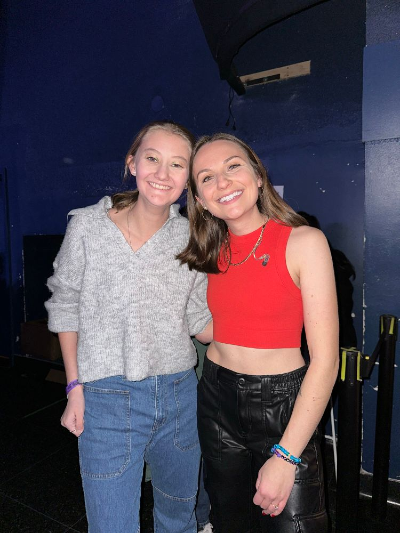
CB: You're really getting me on this one. So I consider Marielle a friend now, and I would say "Something Good."
MW: Which WNBA players would make the best NWSL soccer players and vice versa?
CB: That is a good question. OK, I think Kelsey Plum would be good in the NWSL. I don't have a logical reason for that. I just think that she would make a really good soccer player. I think a player like Skylar Diggins would be a beast on the field in the best way. The other way, Taylor Flint would make a good basketball player. Maybe Alyssa Naeher?
MW: I could absolutely see all four of those. I think they're great picks. Dominique Malonga came to mind for me. I could just see her just like with her wingspan, with her stride, with her ability.Like I think she would be fantastic to watch. I have two more here for you.So I know you're a big South Carolina Gamecocks fan for basketball. So we're going to play a game of start, bench, and cut.
CB: Oh man.
MW: A'ja Wilson. Aliyah Boston. Dawn Staley.
CB: That's so mean. OK, I'm starting A'ja. I think she is my favorite basketball player of all time, like no questions asked. I don't see how anyone could ever not start her. I think I got to bench Dawn and cut Aliyah. I'm sorry. I love Aliyah Boston, but I just don't know how you say no to Dawn. Let's do it.
MW: I had a feeling you're going to answer that with A'ja .So you talked about her first shoe, the A'One selling out in under five minutes. There are four colorways out right now. If you can only pick one, all four available to you at the store, which one are you picking?
CB: I'm getting the white one, the Pearl one.
MW: Thank you so much for joining and chatting with me. Is this going to be available anywhere where people can see it for themselves?
CB: Yes, it definitely will be. What that looks like right now, I don't know. We're still in the very early stages of getting it properly published, but in the meantime, if anyone wants it, you can find me on Bluesky (@campbellb1234.bsky.social) and I'd be happy to send it over to them through it.
Thank you, Campbell, for joining. And until next time, I love you awesome nerds.

